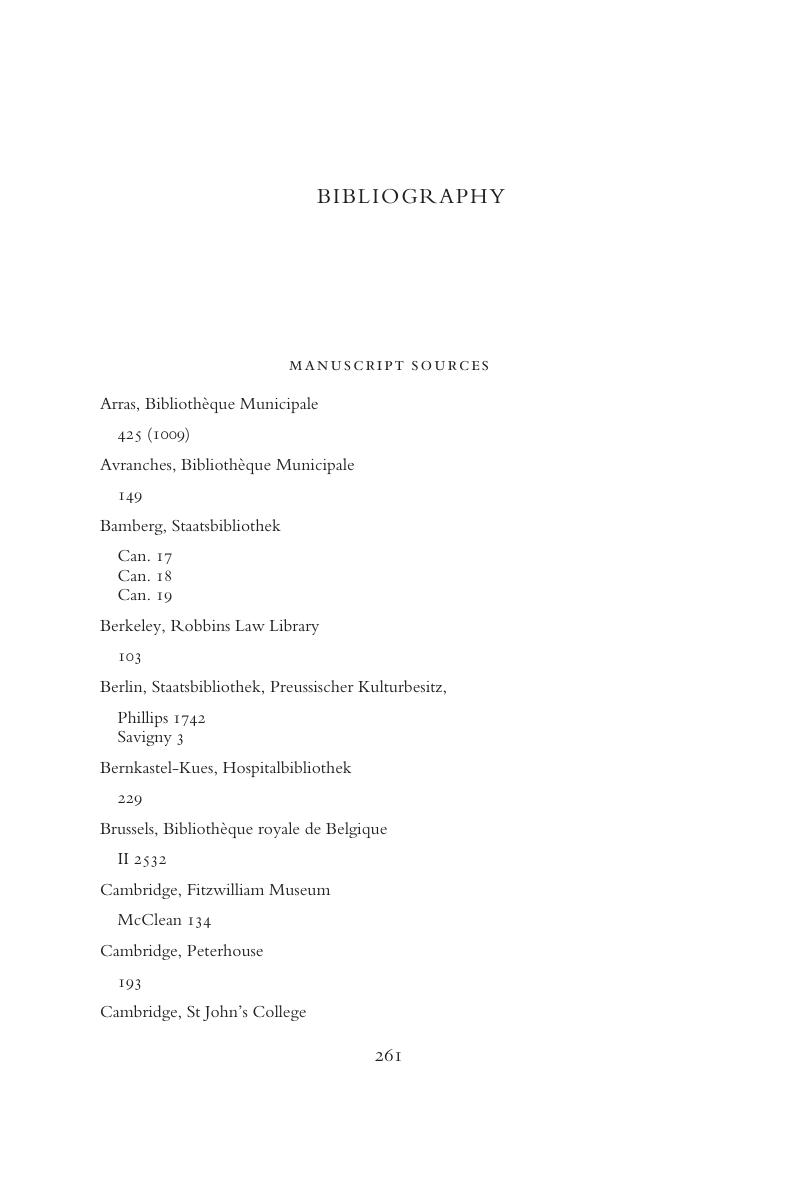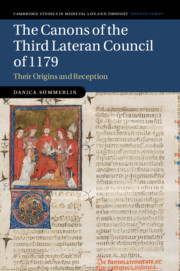Book contents
- The Canons of the Third Lateran Council of 1179
- Cambridge Studies in Medieval Life and Thought Fourth Series
- The Canons of the Third Lateran Council of 1179
- Copyright page
- Dedication
- Contents
- Tables
- Acknowledgements
- Abbreviations
- Walther-Holtzmann Kartei
- Note on Citation Styles
- Introduction
- 1 Historical Survey
- 2 Disputes, Decretals, and the 1179 Conciliar Canons
- 3 The 1179 Canons and the Schools
- 4 The Dissemination of the 1179 Canons
- 5 Use of the Canons, ca. 1179–ca. 1191
- Conclusions
- Appendix: Manuscript Listing of the 1179 Canons
- Bibliography
- Manuscript Index
- General Index
- References
Bibliography
Published online by Cambridge University Press: 08 November 2019
- The Canons of the Third Lateran Council of 1179
- Cambridge Studies in Medieval Life and Thought Fourth Series
- The Canons of the Third Lateran Council of 1179
- Copyright page
- Dedication
- Contents
- Tables
- Acknowledgements
- Abbreviations
- Walther-Holtzmann Kartei
- Note on Citation Styles
- Introduction
- 1 Historical Survey
- 2 Disputes, Decretals, and the 1179 Conciliar Canons
- 3 The 1179 Canons and the Schools
- 4 The Dissemination of the 1179 Canons
- 5 Use of the Canons, ca. 1179–ca. 1191
- Conclusions
- Appendix: Manuscript Listing of the 1179 Canons
- Bibliography
- Manuscript Index
- General Index
- References
Summary

- Type
- Chapter
- Information
- The Canons of the Third Lateran Council of 1179Their Origins and Reception, pp. 261 - 295Publisher: Cambridge University PressPrint publication year: 2019

